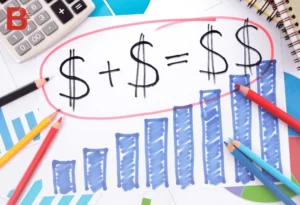The Money Saving Trap Let’s get one thing straight.
The story that you can work a 9-to-5, save every penny, and retire rich at 65 is… well, outdated at best — and misleading at worst.
For decades, we’ve been sold a narrative:
Work hard → Save money → Retire rich.
But here’s the truth: You can’t save your way to wealth anymore.
Not in this economy. Not with this inflation.
And certainly not if you’re hoping to live the life of your dreams before you’re 70.
In this post, we’re going to break down:
- Why saving money is NOT the secret to getting rich.
- How inflation quietly destroys your savings every year.
- The hidden trap banks don’t want you to see.
- Why money isn’t real (yes, really).
- What to do instead if you want to build wealth while you’re still young enough to enjoy it.
Let’s get into it.
Part 1: The Money Saving Trap (And Who Built It)
The Money Saving Trap
The Money Saving Trap the idea that “saving money = financial security” is comforting.
But it’s also a lie — and a dangerous one.
Because it’s not just false… it’s strategic.
This narrative is a system. And it’s working exactly as it was designed to.
Why does the system push this so hard?
Because when you believe saving is the key to wealth, you become easy to control.
You’re predictable. You play it safe. You keep your head down. You don’t challenge the status quo.
In short:
You stay in your lane.
And guess who benefits?
- Banks — because they use your savings to generate massive profits.
- Employers — because you won’t leave that job you hate if you’re scared to take a risk.
- Governments — because compliant citizens are easier to manage and tax.
But here’s the kicker:
This entire strategy is built on an economy that no longer exists.
The Myth of the 1960s Money Plan
Go to school.
Get a “safe” job.
Work 40 years.
Save diligently.
Retire at 65 with a pension and a gold watch.
That used to work.
Why? Because homes were cheap. College was affordable. Salaries rose with inflation. Pensions were real.
But today?
You’re stuck with:
- Wages that haven’t kept up with the cost of living
- Housing prices that are 10x higher than what your parents paid
- Student loans instead of pensions
- Credit cards instead of savings
And yet… they’re still giving you the same outdated financial advice:
“Just save more.”
The Harsh Reality
Most people are:
- Living paycheck to paycheck — even with degrees and decent jobs
- Scared to start a business, invest, or try something new
- Stuck believing that not spending money is the same as building wealth
But here’s the truth:
You’re not going to become a millionaire by skipping Starbucks.
Cutting $5 expenses won’t make you rich.
Building $500 income streams will.
And It’s Not Your Fault
Let’s be clear: you’re not to blame.
The education system wasn’t built to make you wealthy — it was built to make you a good employee.
They taught you how to pass exams.
Not how to create wealth.
Not how to invest.
Not how money actually works in the real world.
But that ends now.
Because once you understand the game, you can stop being a pawn and start playing to win.
Let’s fix it — step by step.s.
Let’s fix that.
Part 2: Your Money Isn’t Real (And Never Was)
The Money Saving Trap
Sounds dramatic, right?
But stay with me — this isn’t conspiracy theory. It’s basic financial history.
Let’s rewind.
There was a time when your money was backed by something real — gold.
This was called the Gold Standard, and it made perfect sense:
You could exchange a paper note (a dollar, for example) for an actual piece of gold.
Gold had intrinsic value. It was scarce, hard to mine, and universally trusted.
But in 1933, the U.S. (and eventually most of the world) abandoned the gold standard.
And in 1971, the link between the dollar and gold was completely severed.
Since then, we’ve been using something called fiat money.
What Is Fiat Money?
Fiat comes from Latin. It literally means “let it be done” or “by decree.”
Fiat currency has no intrinsic value.
It’s not backed by gold, silver, or anything physical.
It only has value because the government says it does — and because people believe it does.
Let that sink in.
Your money is just paper… or digits in a database. It only works because we all agree to play along.
The problem? This gives governments immense control.
They can print more money whenever they want — which increases inflation, devalues the currency, and quietly erodes your purchasing power.
Banks Don’t Help Either
Let’s say you save up $10,000 and deposit it into your bank account.
They pay you 0.5% interest, which comes out to $50 per year.
Not even enough to cover a tank of gas.
Meanwhile, the bank lends out your money at 8% or more.
Or they invest it in the stock market, make millions — and share none of the upside with you.
They’re using your money to grow their wealth.
And you get the crumbs.
Are Banks Evil?
Not necessarily.
They’re businesses. They exist to generate profit — not to make you rich.
But here’s the catch:
If you don’t know how money really works, you become a source of profit — not a participant.
The more you blindly “trust the system,” the more you’re being leveraged.
The truth is, your money isn’t real.
And holding it instead of using it to buy real assets is one of the biggest financial mistakes most people make.
But don’t worry — now that you understand this, you’re ahead of 90% of the population.
Next, let’s look at how your money isn’t just fake…
It’s also disappearing.
They play the game to win. And unless you learn the rules, you’re the one being played.
Part 3: The Silent Killer — Inflation
The Money Saving Trap
Let’s talk about one of the most dangerous threats to your wealth — and the one almost nobody is warning you about:
Inflation.
It doesn’t make headlines.
It doesn’t make noise.
But it’s quietly eating away at your money — every single day.
What They Don’t Teach You About Inflation
You could be the most disciplined saver in the world.
You could cut back on lattes, skip vacations, and stash every extra dollar.
But if your money is just sitting in a basic savings account, it’s losing value over time.
That’s the cruel magic of inflation: your money looks safe, but it’s actually shrinking in real terms.
Inflation is simply the rise in the cost of goods and services over time.
And while a few percentage points may not sound like much, over the years, it compounds — against you.
How Inflation Destroys Savings (With Real Numbers)
Let’s say you have $10,000 in a standard bank account earning 0.5% interest per year.
Seems smart, right?
But if inflation is running at 3.5% annually (which is conservative in today’s economy), you’re losing about 3% of your money’s purchasing power each year.
That means:
- After 1 year, your money buys 3% less.
- After 5 years, it buys ~15% less.
- After 10 years, you’ve lost nearly 30% of its real value.
So while your bank account might show $10,500, in reality, it spends like $7,000 to $8,000 in today’s dollars.
You feel like you’re saving, but you’re actually falling behind.
Inflation Is a Tax You Never Voted For
Governments and central banks often downplay inflation.
But make no mistake: it’s a hidden tax on your savings.
When they print more money (hello stimulus checks), the supply of currency increases… but the value of each dollar decreases.
And who suffers?
You — the saver.
That’s why wealthy people don’t sit on cash. They convert it into assets that outpace inflation — like real estate, stocks, or businesses.
The Bottom Line
If your money isn’t growing faster than inflation, you’re getting poorer — even if the numbers in your bank account are going up.
So stop thinking about how much you’re saving.
Start thinking about how much your money is earning.
Otherwise, the silent killer will keep quietly draining your financial future.
Part 4: So… Should You Spend It All?
The Money Saving Trap
Nope.
Some people fall into the opposite trap:
“If saving is bad, I might as well YOLO and spend it all.”
That’s not the answer either.
We live in a consumption-driven society that tells us buying more stuff = happiness.
But more often than not, people are just trying to escape their reality through spending.
Here’s the shift:
Don’t spend to feel rich.
Use money to become rich.
And that means learning how to use money as a tool — not something you stash under your mattress or blow at the mall.
Part 5: Build Wealth With Assets, Not Savings
Here’s the secret that millionaires know:
Money sitting still is money dying.
So what do they do instead?
They use money to buy assets — things that grow in value or generate income.
What Are Assets?
Assets are things like:
- Stocks & ETFs
- Real estate
- Businesses
- Royalties
- Digital products
- Even content (YouTube channels, blogs, email lists)
These are things that either appreciate over time or produce cash flow without you trading your time.
Example: The S&P 500
Historically, the S&P 500 has returned 8–10% annually.
If you invest $500/month into an index fund that tracks the S&P 500, here’s what happens:
- After 10 years: ~$91,000
- After 20 years: ~$271,000
- After 30 years: ~$680,000
That’s compound growth. And it beats any savings account by a mile.
Part 6: You Need to Start Now
Most people wait until it’s “the right time” to invest.
But the right time is now. Always has been.
“The best time to plant a tree was 20 years ago. The second-best time is today.” — Chinese Proverb
Why You Shouldn’t Wait:
- Opportunity cost: While you wait, others are building wealth.
- Compounding needs time: The earlier you start, the more powerful it is.
- Inflation is always working against you.
Don’t worry if you only have $50 or $100 to start.
The habit is more important than the amount.
Even investing $5 a week beats doing nothing for years.
Part 7: A Smarter Way to Manage Your Money
Saving isn’t useless — but it needs to be part of a larger system.
Here’s a simple breakdown:
Emergency Fund (3–6 Months of Expenses)
You need liquidity. Life happens.
Keep this in a high-yield savings account or a money market fund.
Investment Bucket
This is where the real wealth is built.
- Index funds (e.g., S&P 500, Nasdaq)
- ETFs with low fees
- Fractional shares of top companies (Apple, Tesla, etc.)
- REITs (real estate investment trusts)
Use platforms like:
- Moomoo – great for U.S. users with signup bonuses
- Lightyear – offers fractional shares and no commission ETFs
- Public.com, Robinhood, or EToro
Always do your research and start small.
Enjoyment Fund
Yes, spend some. Guilt-free.
Designate a fixed % of income to enjoy life today — without sabotaging your future.
Part 8: Avoid These Common Traps
Here are 5 wealth-killers to watch out for:
- Lifestyle Creep – Earning more and spending more just to “keep up.”
- Paralysis by Analysis – Waiting too long to start investing because you’re “not ready.”
- High-Fee Investment Platforms – Avoid apps that charge 1%+ on every trade.
- Only Saving, Never Investing – You can’t save your way to wealth in the long run.
- Listening to Broke Friends – Be careful who you take money advice from.
Part 9: Money Is a Tool — Not the Goal
You’re not saving money to hoard it.
You’re not investing money just to see numbers grow.
You’re using money to buy what really matters:
- Freedom
- Time
- Options
- Peace of mind
When you start seeing money as a tool, everything changes.
You no longer feel guilty spending on things that improve your life.
You stop fearing risk — because you understand how to manage it.
You stop chasing cheap financial advice — and start playing the long game.
Final Thoughts: Save Smarter, Not Harder
The truth is, saving has its place.
You need a buffer. You need some stability.
But if you’re trying to become wealthy, you need more than a savings account.
Here’s the new money mindset:
- Save to survive.
- Invest to thrive.
If you’re young, the best thing you can do is get in the game now.
You don’t need a finance degree. You don’t need $10,000.
You just need to start.
Even $50 invested today is worth more than $5,000 sitting in savings for five years.
So stop waiting.
Stop hoarding.
Stop believing the lies they sold your parents.
Take back control.
Use money as a tool.
Build wealth on your terms.
And live the life you actually want — not the one the system pre-wrote for you.
Looking for one of these top-selling gadgets?
Support the blog and level up your tech by buying through our Amazon partner store — you pay the same price, AND you’re helping us create more content like this! Just click the link, choose your product:
Smartphones:
Notebooks:
Smartwatches:
Audio & Streaming:
Thanks so much for your support!




























